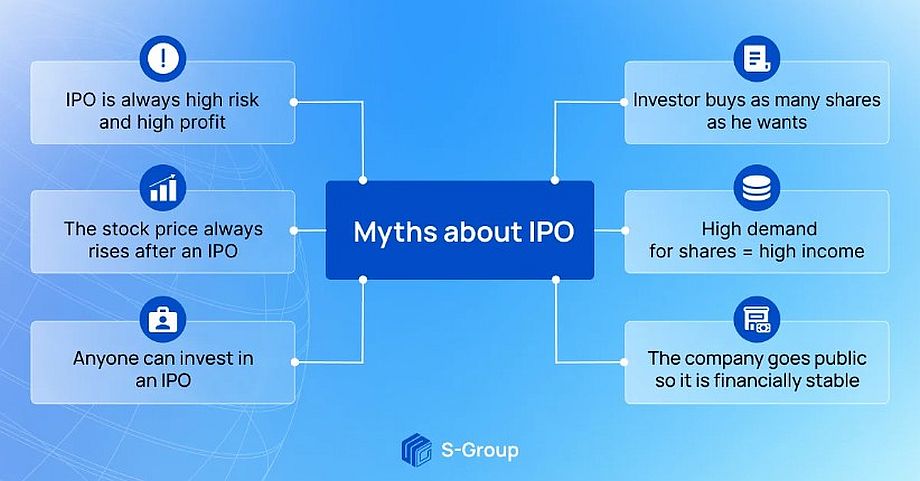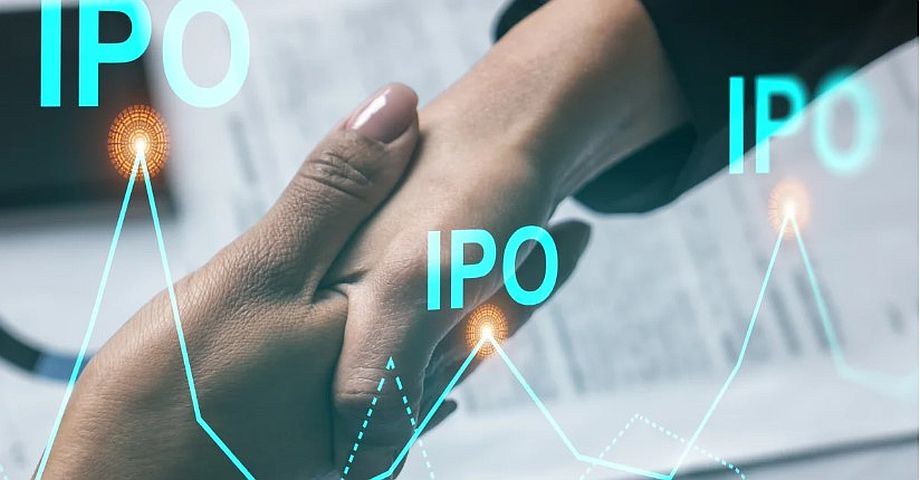6 Myths about IPO: what investors need to know
In this article, we analyze the most popular 6 Myths about IPO and tell you what to look for before investing.
The average return on investment in an IPO is 68%. But, despite the high yield, there are many myths about the IPO direction that are not true and can confuse potential investors.
Myth 1. IPO is always high risk and high profit.
Fact. Investing in an IPO does involve risk, but the investor’s percentage of return can vary. After the company’s IPO and the end of the lock-up period, the price of the company’s shares rises to varying degrees. It can be 50%, 20% or less. It all depends on the reputation of the company in the market.
For example, the shares of Tracxn Technologies Limited, after entering the IPO and the end of the lock-up period, grew by 16.69%, but after listing on the stock exchange, they fell in price. Now the increase in the price of the company’s shares is 13.5%.
Myth 2. Investor buys as many shares as he wants
Fact. The investor can request the broker to buy the required number of shares. But if the demand for the company’s shares is high, he will be able to get only a fraction of the desired amount. The process of distribution of shares between investors is called allocation.
Myth 3. The stock price always rises after an IPO.
Fact. There are times when shares fall in price after a company goes public. Then the investor loses part of the funds he invested. For example, in May 2022, Inox Green Energy Services Limited went public with an IPO. After the lock-up period, the company’s shares fell in price by 9.08%, and by the beginning of 2023, the total loss in the share price amounted to 28.28%.
Myth 4. High demand for shares = high income
Fact. The hype surrounding a company that is going to an IPO can be artificially created. Marketers can develop a successful PR campaign, create a community and high demand for shares. But if a company does not have a clear business strategy or its capitalization is overvalued, the stock may fall during the listing. Despite the high level of publicity in the media, investors need to conduct in-depth analysis of the company in order to avoid losing funds.
Myth 5. Anyone can invest in an IPO
Fact. An IPO is an investment tool that requires a long and serious analysis of companies and markets. It can bring both high profits and big losses. Therefore, novice investors are advised to learn how to invest in the classic stock markets.
Allocation in an IPO also disproves this myth. As a rule, novice investors do not receive shares when distributed by a broker. This is due to their lack of a history of operations on a brokerage account, an investment portfolio and diversification of investment risks.
Myth 6. The company goes public, so it is financially stable
Fact. The company undergoes some preparation and verification before the IPO, but this does not indicate its financial stability. With the help of an IPO, a company can raise funds not only for expansion or new developments, but also to pay off debt obligations. In this case, the company’s shares may fall sharply in price after the start of listing on the stock exchange and not return to the initial level even after a while.
Summary | 6 Myths about IPO
Before investing in an IPO, an investor should analyze all the risks and carefully study the company whose shares he wants to buy. It is important to remember that the return on investment in an IPO depends on many factors: the state of the financial markets, the company’s development strategy, and the prospects of the industry. Therefore, novice investors should take investment analysis and risk assessment seriously.
In S-IPO, professional analysts are engaged in the search for investment proposals and the analysis of factors affecting profits. A team of experts helps novice investors quickly learn the IPO tool and receive passive income in this direction.


